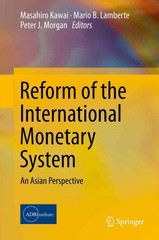8 Independent claim amounts Y1, Y2,....Y,, are modelled as exponential distributions with mean Ale The fitted values for a particular model are denoted by my . Derive an expression for the scaled deviance. [5] A small insurer wishes to model its claim costs for motor insurance using a simple generalised linear model based on the three factors: (1=1 for young' drivers YO; =1 1 1=0 for 'old' drivers [j=1 for 'fast' cars FS/ = 1i=0 for 'slow' cars k=1 for 'town' areas TCK = 1 k=0 for'country' areas The insurer is considering three possible models for the linear predictor: Model 1: YO+FS+ TC Model 2: YO+ FS+YO.FS+TC Model 3: YO * FS* TC Write each of these models in parameterised form, stating how many non-zero parameter values are present in each model. [6] Explain why Model 1 might not be appropriate and why the insurer may wish to avoid using Model 3. [2] (iii) The student fitting the models has said 'We are assuming a normal error structure and we are using the canonical link function.' Explain what this means. [3](iv) The table below shows the student's calculated values of the scaled deviance for these three models and the constant model. Scaled Model Degrees of freedom Deviance 1 50 7 YO+ FS + TC 10 YO+ FS +YO.FS+TC 5 YO* FS * TC 0 Complete the table by filling in the missing entries in the degrees of freedom column and carry out the calculations necessary to determine which model would be the most appropriate. [5] [Total 16] 10 The following study was carried out into the mortality of leukaemia sufferers. A white blood cell count was taken from each of 17 patients and their survival times were recorded. Suppose that Y, represents the survival time (in weeks) of the ith patient and x, represents the logarithm (to the base 10) of the ith patient's initial white blood cell count ( / =1,2,...,17 ). The response variables Y, are assumed to be exponentially distributed. A possible specification for E(Y;) is E(Y;)= exp(a + /x;) . This will ensure that E(Y;) is non-negative for all values of x; . (i) Write down the natural link function associated with the linear predictor m= a + 8x . [2] (ii) Use this link function and linear predictor to derive the equations that must be solved in order to obtain the maximum likelihood estimates of a and B . [4] (mii) Given that the maximum likelihood estimate of a derived from the experimental data is @=8.477 and se(@)=1.655, construct an approximate 95% confidence interval for a and interpret this result. [2] (iv) The following two models are now to be compared: Model 1: E(Y,) = Q Model 2: E(Y,) = a+ #x; The scaled deviance for Model 1 is found to be 26.282 and the scaled deviance for Model 2 is 19.457. Test the null hypothesis that /=0 against the alternative hypothesis that 40 stating any conclusions clearly. [3] [Total 11]8 Shown below is the statement of financial position for 31 December 20X4 of Kwaint Kitchens, a chain of cookshops. Statement of financial position for Kwaint Kountry Kitchens for 31 December 20X4 E ASSETS Non-current assets Land and buildings 800,000 Current assets Inventories 425,000 Cash 125,000 Trade receivables 28,000 578,000 Total assets 1,378,000 EQUITY AND LIABILITIES Share capital ((1 par value) 700,000 Other reserves 200,000 Retained earnings 225,500 Total equity 1,125,500 Non-current liabilities 12% Unsecured Loan Stock 20X9 150,000 Current liabilities Trade payables 51,000 Tax due 26,500 Overdraft 25,000 102,500 Total liabilities 252,500 Total equity and liabilities 1,378,000During 20X5, the following events occurred: In January, the company bought shares in Calvin's Cookware for a consideration of f400,000. This was financed by the issue of f200,000 nominal of 8% Convertible Unsecured Loan Stock 20X8, and f100,000 nominal of 10% Debentures 20X7. The loan stock were issued at par. The remaining $100,000 was paid for out of cash. In January, the company also acquired the exclusive rights to sell the new 'Muesli Meadow' design of kitchenware, for a price of f100,000. It proposes to show these rights as an asset in its statement of financial position, and to depreciate these rights by the straight line method over 10 years. The company's operating profit for 20X4 was $243,000, on revenue of E1,215,000. Revenue increased by 3% in 20X5, and operating profit was $120,000. The company paid the interest on its loan stocks in full. The company's total tax charge for 20X5 was f18,000. It paid tax of f32,000 during the year. The dividends it paid amounted to f32,000. Inventories increased by $4,500 and trade receivables increased by $10,000. Trade payables increased by $17,000. The company reduced its overdraft by $15,000 and reduced its cash balance by $90,500. The company's non-current assets consist of shops and land. The land was valued in 20X0 at E200,000 and is not subject to depreciation. The shops were purchased previously for E1 million and are being depreciated using the straight line method over 10 years. (i) Prepare the statement of financial position for 31 December 20X5. [9] (ii) Comment on the company's performance in terms of profitability, liquidity and efficiency during 20X4 and 20X5, using appropriate supporting ratios. (11] [Total 20]










